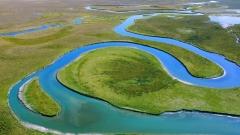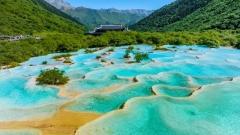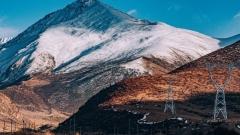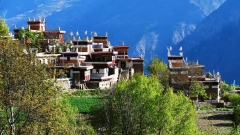Tucked away in the mountains of northern Sichuan, Jiuzhaigou Valley—a UNESCO World Heritage Site—has long been described as a “fairyland on earth.” But what truly captures travelers’ hearts are its colorful lakes, shimmering in shades of turquoise, emerald, sapphire, and even amber. The question every visitor asks is the same: Why are Jiuzhaigou’s lakes so incredibly colorful?
In this article, we’ll uncover the natural secrets behind these magical waters, explore the best lakes to visit, and share travel tips to make your journey to Jiuzhaigou unforgettable.
The Science Behind Jiuzhaigou’s Colors
1. Crystal-Clear Calcium Carbonate
At the heart of Jiuzhaigou’s beauty is its geology. The lakes sit in a high-altitude karst landscape rich in calcium carbonate (CaCO₃). Over thousands of years, minerals from underground springs have formed limestone and travertine deposits, which act like natural mirrors. These mineral-rich layers reflect sunlight in ways that enhance the water’s color.
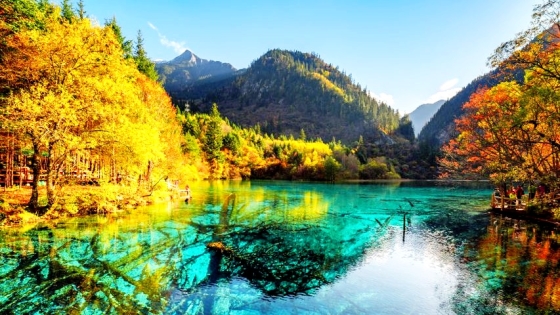
Jiuzhaigou
2. Algae and Microorganisms
Microscopic life also contributes to Jiuzhaigou’s kaleidoscope. Different types of algae and aquatic plants thrive in varying water temperatures and light levels. Some reflect green or yellow tones, while others deepen the blues. Together, they paint each lake with a unique palette that changes slightly throughout the seasons.
3. Pure Snowmelt and Glacier Water
Most of Jiuzhaigou’s water comes from snowmelt and glaciers in the surrounding Min Mountains. Because it is exceptionally pure—almost free of sediment or pollution—it allows light to penetrate deeply. This transparency amplifies the vivid reflection of the lakebed’s minerals, producing the valley’s signature jewel-like glow.
4. The Perfect Altitude and Climate
Sitting between 2,000 and 3,000 meters above sea level, Jiuzhaigou enjoys thin, clean mountain air and a cool climate. These conditions prevent algae from overgrowing and preserve the lakes’ clarity. The combination of altitude, sunlight, and mineral content is rare, which is why Jiuzhaigou’s colors are found nowhere else on Earth.
The Most Famous Colorful Lakes in Jiuzhaigou
Each of Jiuzhaigou’s 108 lakes has its own legend and hue. Here are the most breathtaking ones you shouldn’t miss:
Five Flower Lake (Wuhua Hai)
The most iconic and photographed lake in Jiuzhaigou, Five Flower Lake dazzles with its mixture of turquoise, sapphire, and golden hues. Beneath the surface lie ancient fallen trees, clearly visible through the crystal-clear water. Locals believe the lake is sacred, symbolizing purity and rebirth.
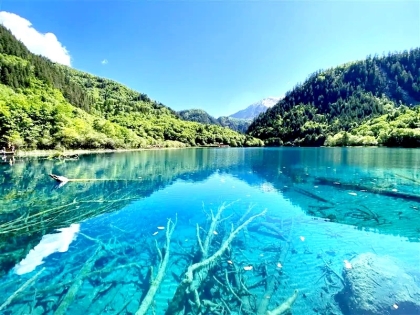
Five Flower Lake
Five-Color Pond (Wucai Chi)
Despite being only 5 meters deep, this tiny lake reflects an astonishing range of colors—from jade green to cobalt blue. Its vividness remains constant throughout the year, earning it the title of “the essence of Jiuzhaigou.”
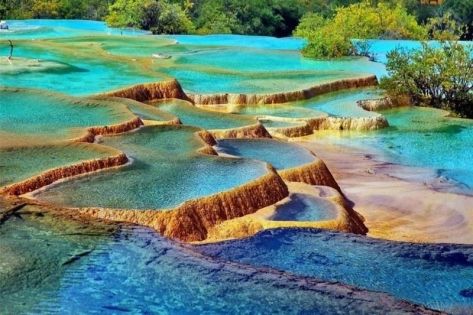
Five-Color Pond
Mirror Lake (Jing Hai)
As its name suggests, Mirror Lake reflects the surrounding snow peaks and forests like a perfect mirror. On calm mornings, it’s hard to tell where the lake ends and the sky begins.
Long Lake (Chang Hai)
The largest and deepest lake in Jiuzhaigou, Long Lake stretches over 4.5 kilometers. Its dark blue color comes from its great depth—over 100 meters—and from the reflection of surrounding snow-capped peaks.
Panda Lake and Swan Lake
Both lakes are known for their ever-changing colors, especially in autumn, when golden trees and emerald waters form a painter’s dream. Panda Lake even gets its name from the legend that wild pandas once drank from its shores.
The Myths and Legends of Jiuzhaigou
Tibetan folklore offers a more romantic explanation for Jiuzhaigou’s colors. One legend tells of a goddess who dropped her magic mirror, given by her lover, onto the mountains. The mirror shattered into 108 sparkling pieces, forming the valley’s lakes.
In another story, the lakes are said to be the tears of a mountain goddess, crying over her lost love. These myths reflect the deep spiritual connection local Tibetan and Qiang communities feel toward the land.
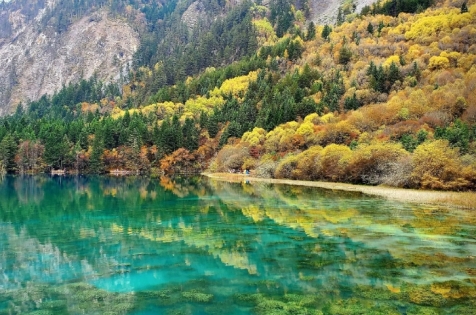
jiuzhai
When to Visit for the Best Colors
-
Spring (April–May): Snowmelt fills the lakes, and the colors appear especially bright.
-
Summer (June–August): Waterfalls are powerful, and green forests contrast beautifully with blue lakes.
-
Autumn (September–October): The most photogenic season—golden trees, red leaves, and vivid water hues.
-
Winter (November–February): Some lakes freeze, creating stunning ice patterns, while others remain emerald and still.
Photography Tips
-
Visit early morning or late afternoon for softer lighting and fewer crowds.
-
Bring a polarizing filter to reduce glare and capture the lake’s true colors.
-
Use wide-angle lenses to include reflections and mountains in the same frame.
-
Drones are not allowed, but elevated boardwalks offer incredible panoramic views.
Sustainable Travel: Protecting Jiuzhaigou’s Fragile Beauty
After the 2017 earthquake, parts of Jiuzhaigou Valley were closed for restoration. Thanks to careful ecological management, most areas have reopened—but the ecosystem remains fragile.
Visitors are encouraged to:
-
Stay on marked paths and boardwalks.
-
Avoid throwing anything into the lakes.
-
Support local eco-tourism and cultural communities.
By traveling responsibly, you help preserve this world treasure for generations to come.
How to Visit Jiuzhaigou
✈️ Getting There
-
By Air: Jiuzhai Huanglong Airport (JZH) connects directly with Chengdu, Chongqing, and Xi’an. From the airport, it’s a 1.5-hour drive to the scenic area.
-
By Road: Regular buses and private tours from Chengdu take around 8–9 hours, offering scenic stops along the Min River.
🎟️ Entrance Tips
-
Tickets can be booked online in advance, especially during peak seasons (October “Golden Week”).
-
The park’s eco-bus system connects all major attractions and helps limit environmental impact.
Conclusion
The colorful lakes of Jiuzhaigou are more than just a natural wonder—they are a symbol of balance between earth, water, and spirit. Whether you’re drawn by science, beauty, or legend, the valley’s shimmering waters leave every traveler in awe.
From the sapphire depths of Long Lake to the rainbow reflections of Five Flower Lake, Jiuzhaigou reveals nature’s artistry at its finest—a masterpiece painted by time, minerals, and light.
Visiting this paradise with an experienced local agency, such as China Dragon Travel, ensures you experience both the natural and cultural magic of Jiuzhaigou—responsibly and deeply.




